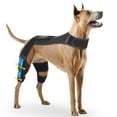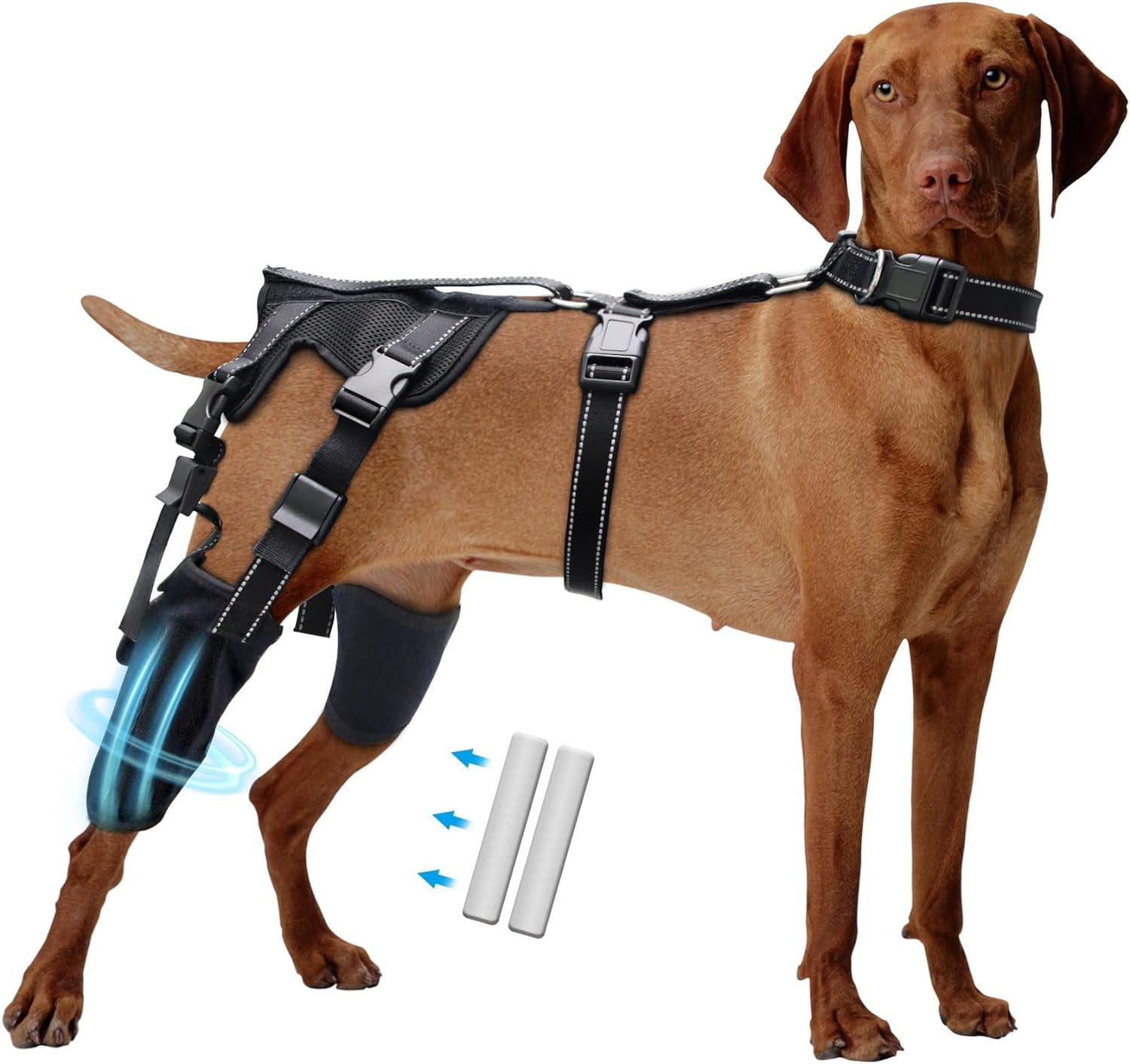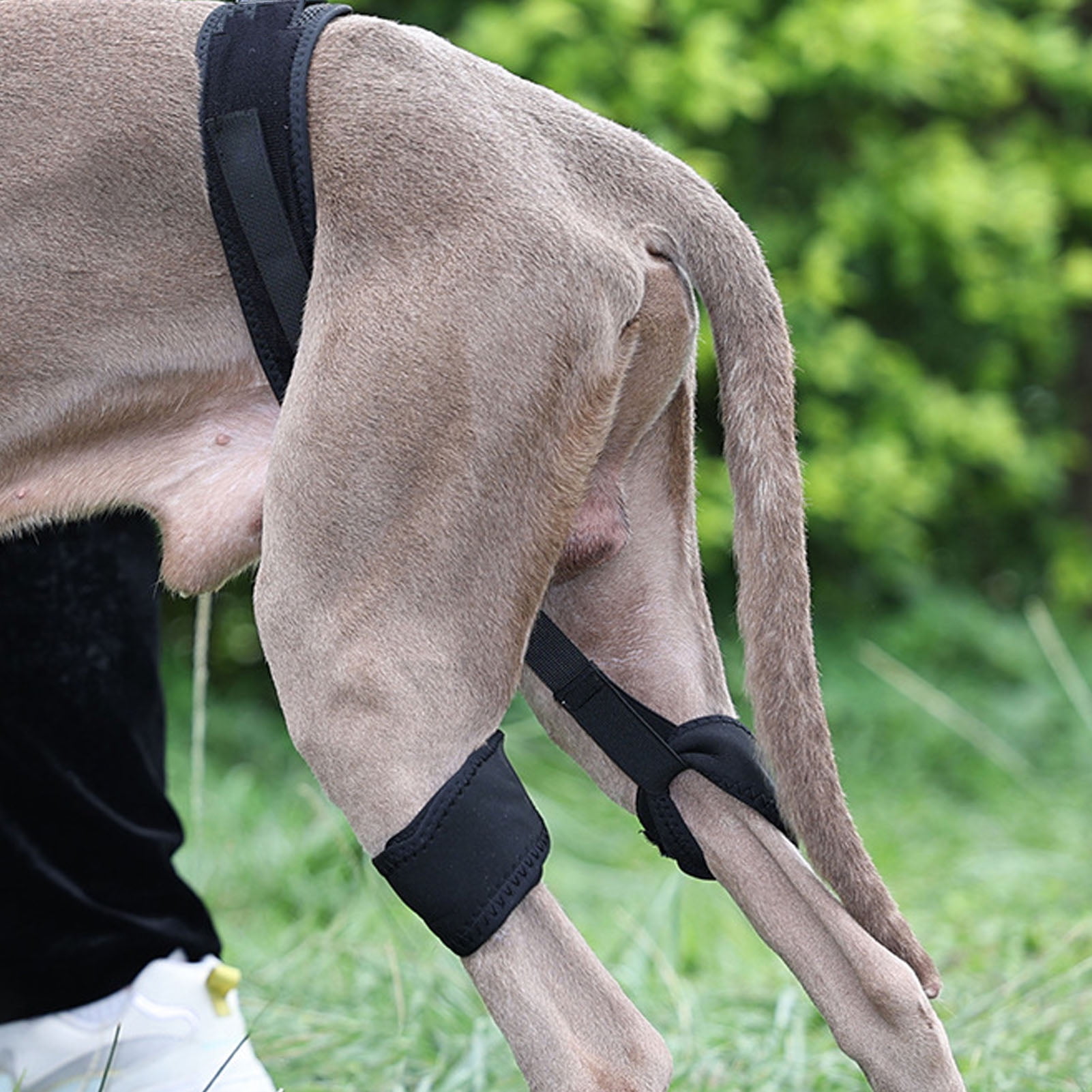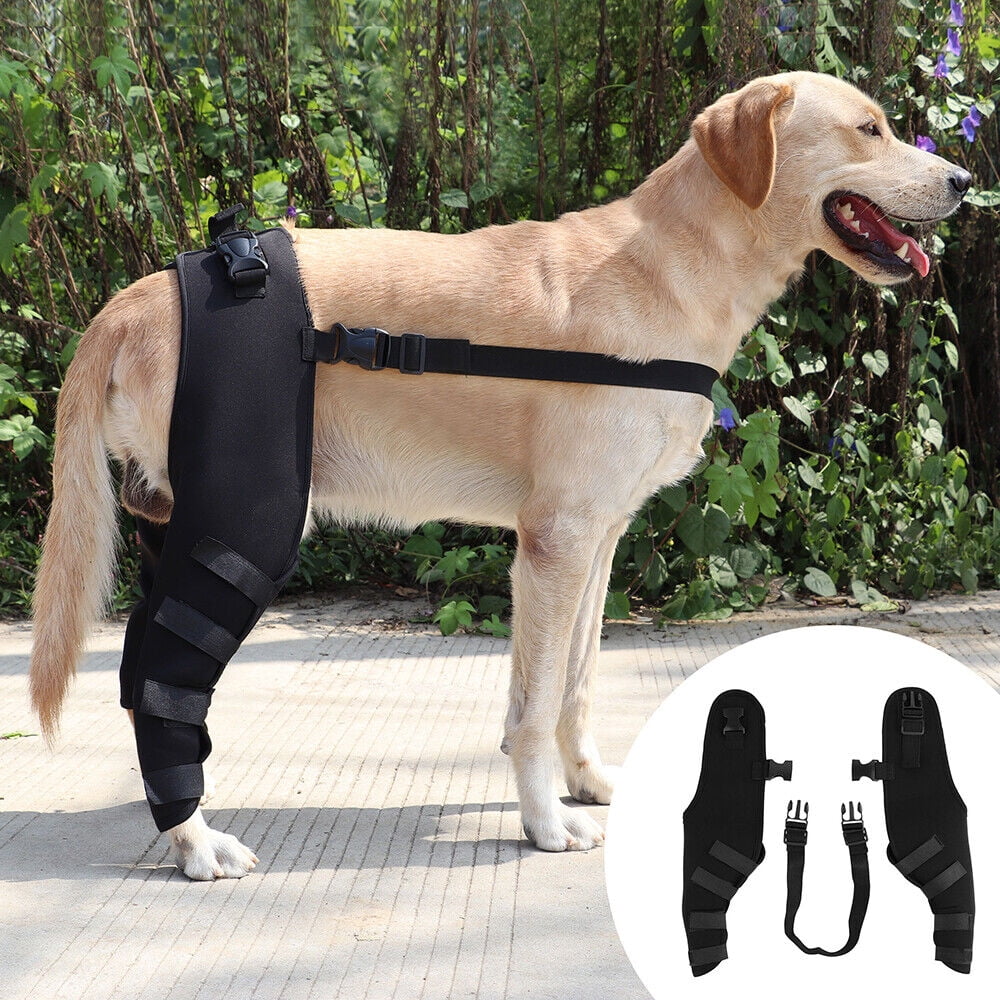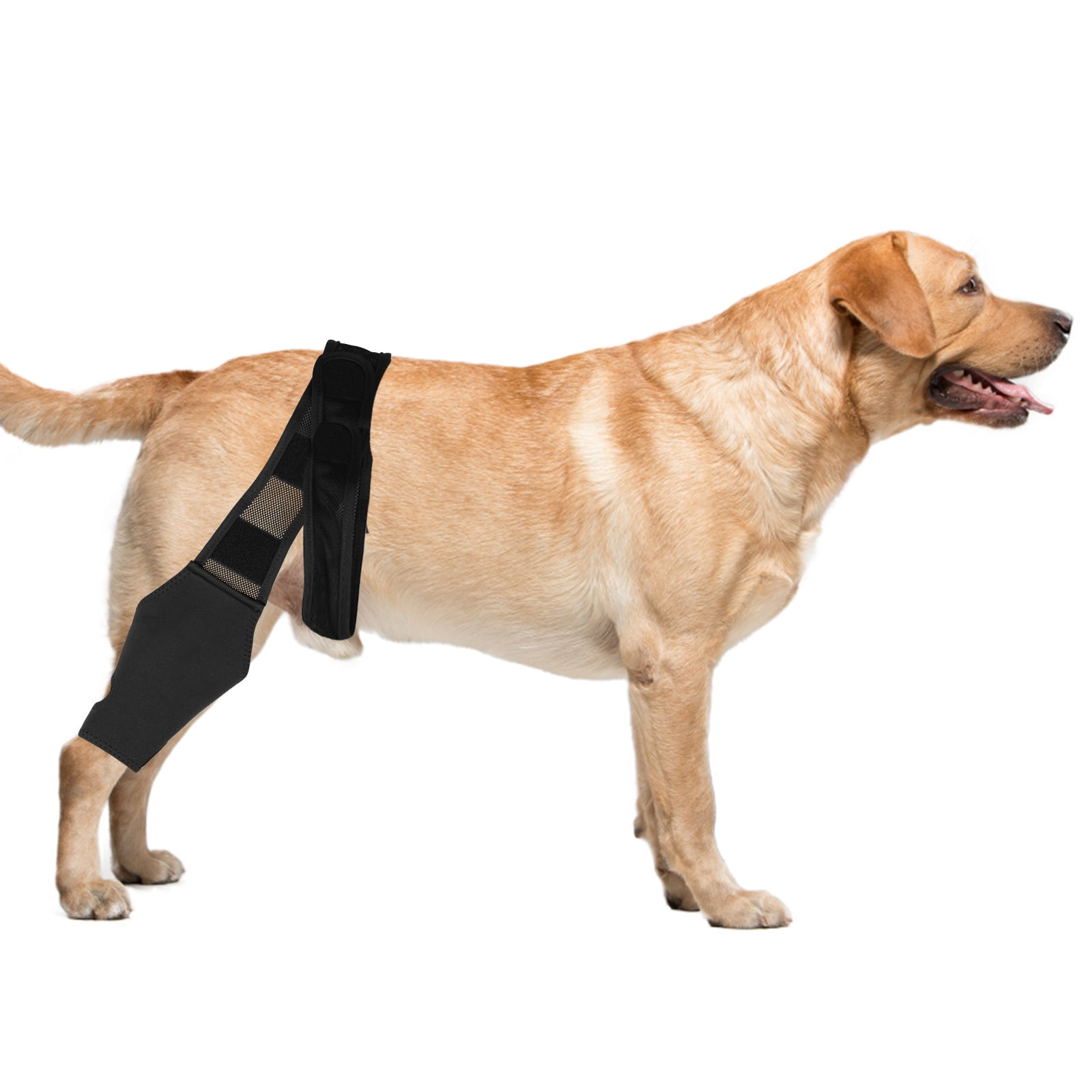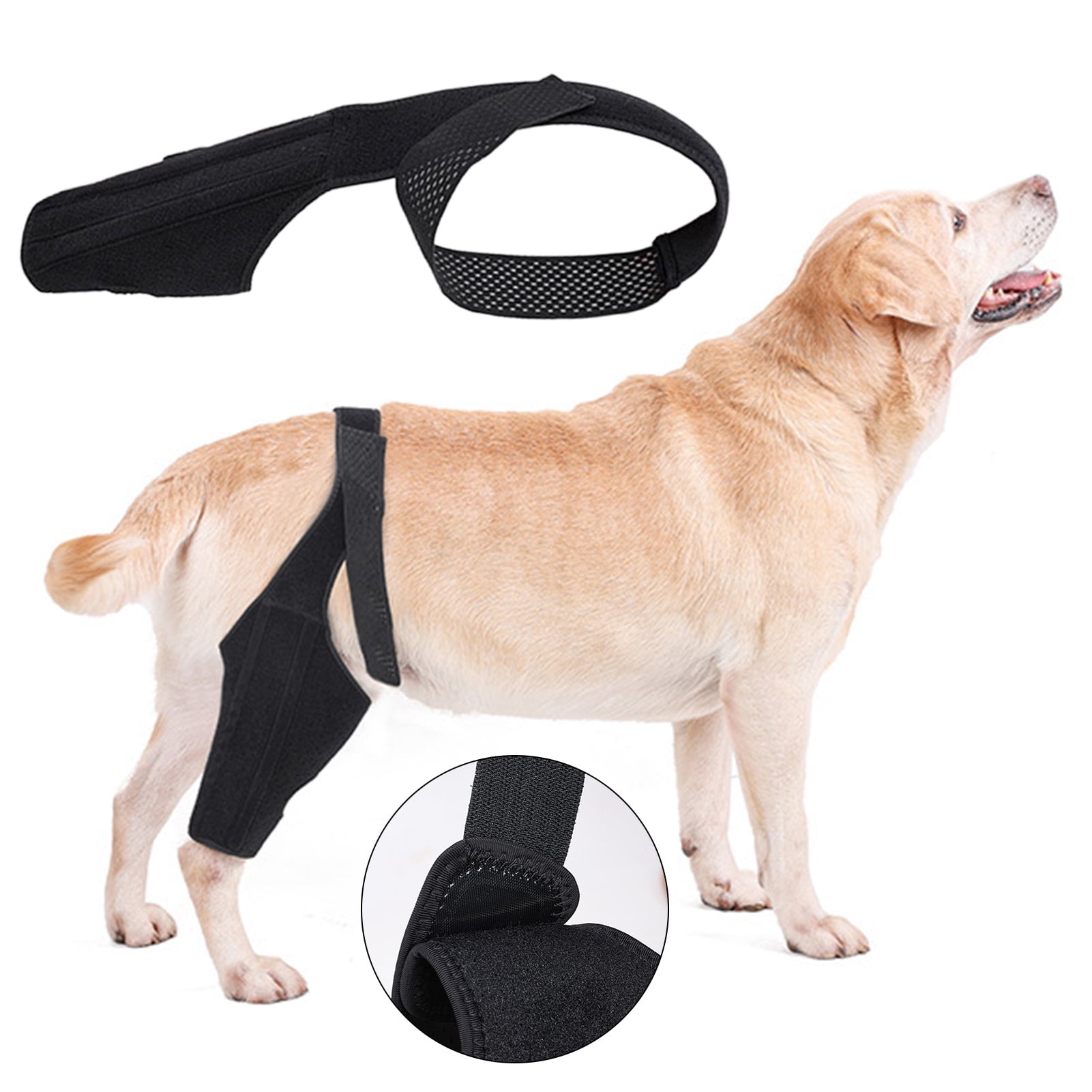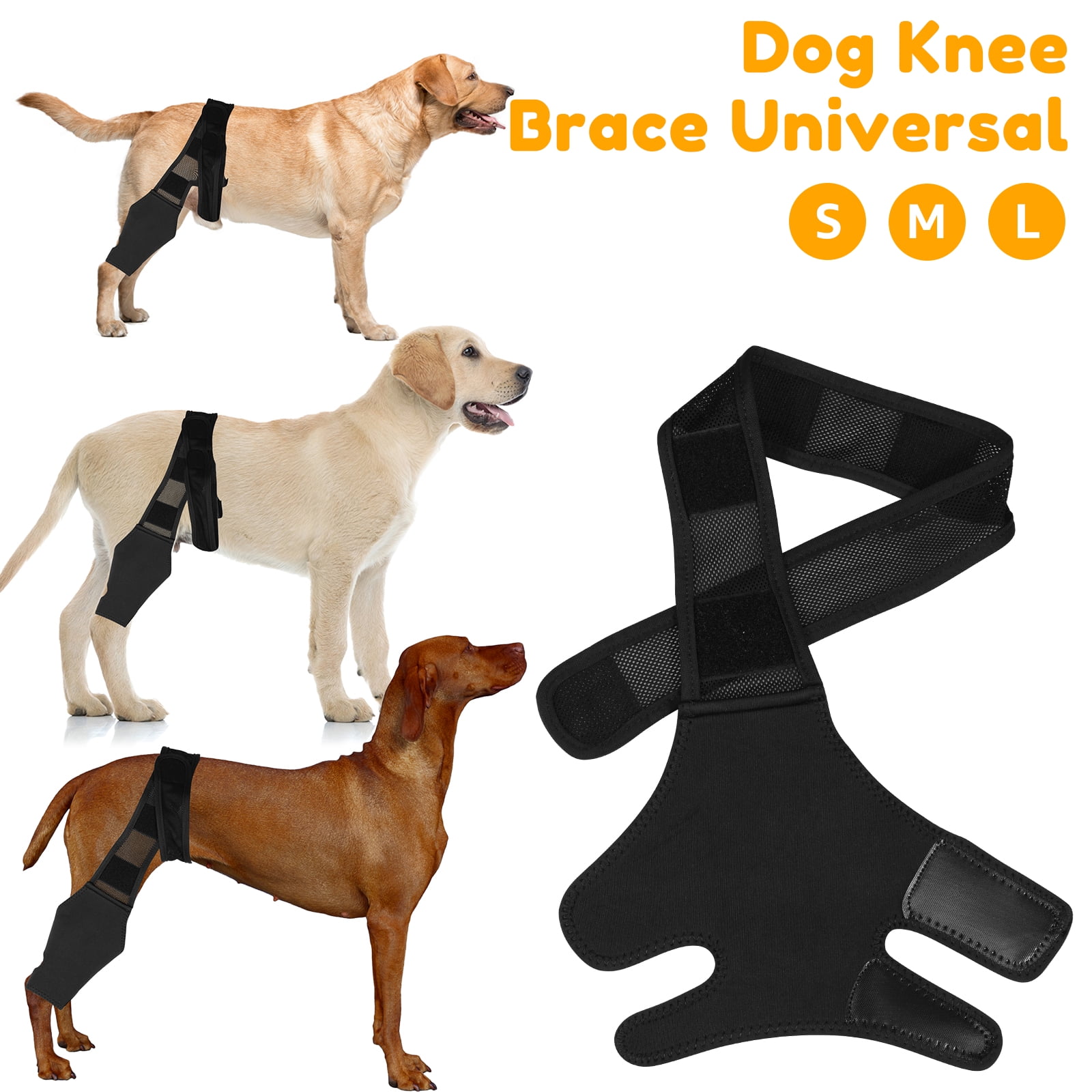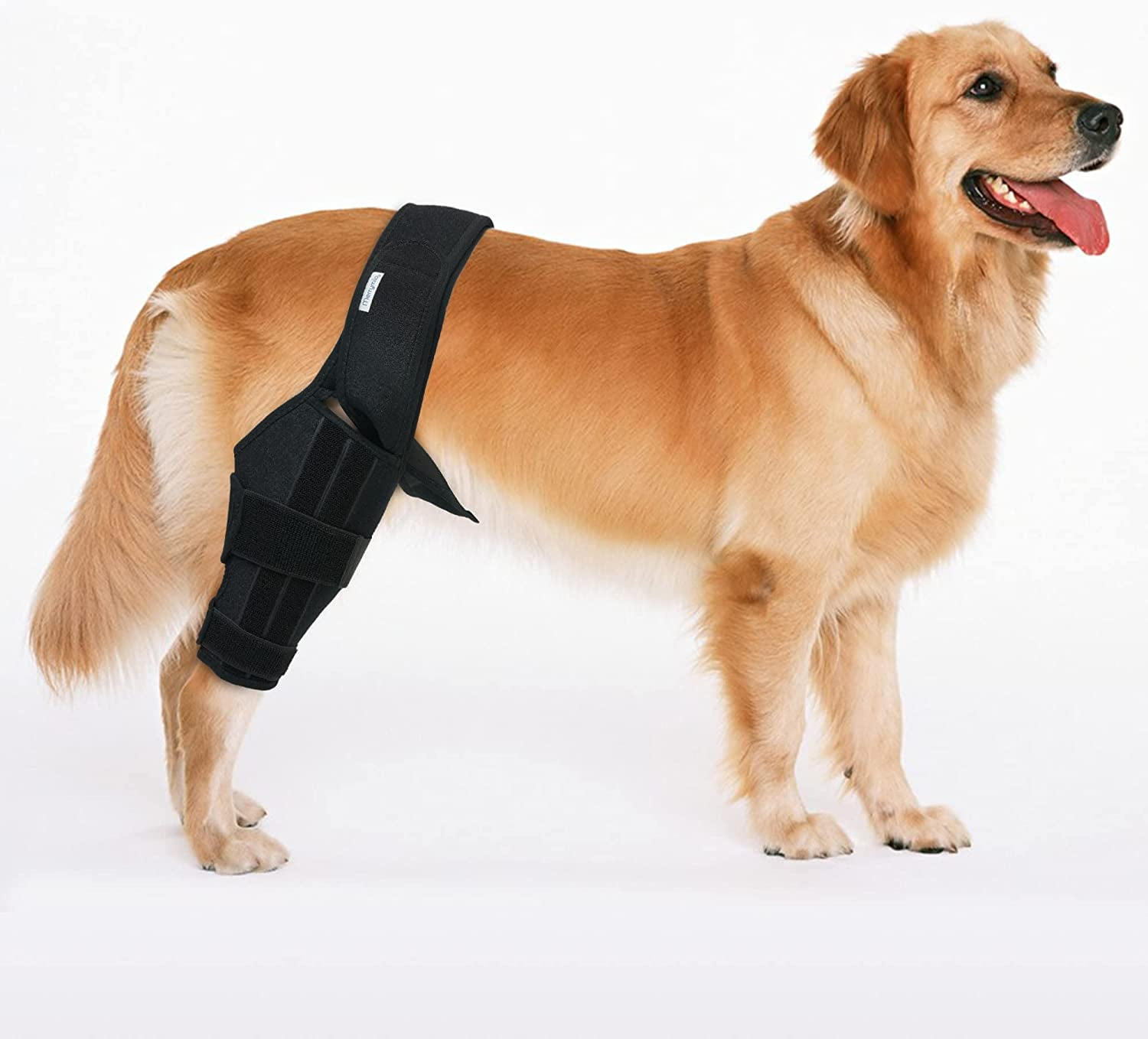Knee Brace For Dogs Back Leg

Imagine Luna, a spirited Golden Retriever, chasing squirrels with the boundless energy of a puppy, despite being ten years young. Her joyful leaps and bounds fill the park with happy barks, but lately, a slight limp has crept into her gait, a subtle whisper of discomfort in what was once effortless motion. Her owner, Sarah, watches with concern, knowing that Luna's zest for life depends on her ability to move freely and without pain.
For many dogs like Luna, facing age-related joint issues or recovering from injuries, a back leg knee brace can offer a renewed lease on life. It’s not a magical cure, but a supportive tool that provides stability, reduces pain, and assists in the healing process, ultimately improving a dog's mobility and quality of life.
Understanding Canine Knee Issues
The canine knee, or stifle joint, is a complex structure prone to various problems. One of the most common is a cranial cruciate ligament (CCL) injury, analogous to the ACL in humans. This ligament stabilizes the knee, and when it tears or ruptures, it causes pain, instability, and lameness.
CCL injuries can occur due to sudden trauma, such as a misstep during play, or gradually over time due to degeneration or overuse. Other common knee issues include patellar luxation (dislocating kneecap) and osteoarthritis, which can also benefit from the support of a knee brace.
The Role of a Knee Brace
A back leg knee brace for dogs aims to provide external support to the stifle joint. This support helps stabilize the knee, reducing pain and preventing further injury. It’s particularly useful for dogs with CCL injuries, patellar luxation, or osteoarthritis.
The brace works by limiting excessive movement and distributing weight more evenly across the leg. This allows the injured tissues to heal more effectively and reduces strain on the surrounding muscles and ligaments. The goal is to improve comfort and mobility.
Benefits Beyond the Obvious
Beyond pain relief and stabilization, a knee brace offers several other benefits. It can delay or even eliminate the need for surgery in some cases, especially for mild to moderate injuries. Surgery can be expensive and involve a lengthy recovery period, making a brace a more appealing initial option for some owners.
Furthermore, a brace can be used post-operatively to support the joint during recovery and rehabilitation. It helps to protect the surgical site, reduce swelling, and encourage early weight-bearing, which is crucial for regaining strength and mobility.
Types of Knee Braces Available
Various types of knee braces are available for dogs, ranging from custom-made to off-the-shelf options. Custom-made braces are typically more expensive but offer a precise fit and optimal support. They are often recommended for dogs with complex injuries or unique anatomical needs.
Off-the-shelf braces are more affordable and readily available, but they may not provide the same level of customization. These braces come in various sizes and designs to accommodate different breeds and injury types. Choosing the right brace depends on the dog's specific condition, size, and activity level.
Key Considerations When Choosing a Brace
When selecting a knee brace, it's crucial to consult with a veterinarian or a certified veterinary orthotist. They can assess the dog's condition, recommend the most appropriate type of brace, and ensure a proper fit. A poorly fitted brace can cause discomfort, skin irritation, or even further injury.
Fit is paramount. The brace should be snug enough to provide support but not so tight that it restricts circulation or causes chafing. The dog should be able to move comfortably while wearing the brace, and the owner should monitor the skin for any signs of irritation or pressure sores.
Success Stories and Real-World Impact
Many dog owners have shared heartwarming stories of how knee braces have transformed their pets' lives. One example is Buster, a Labrador Retriever who suffered a CCL tear while playing fetch. Initially, surgery was recommended, but his owner opted for a custom-made knee brace instead.
Within weeks, Buster was walking more comfortably and gradually regained his ability to enjoy his favorite activities. While he still requires ongoing management and careful exercise, the brace allowed him to avoid surgery and maintain a good quality of life. These anecdotes are supported by studies. According to the American Animal Hospital Association (AAHA), conservative management, including bracing, can be a viable option for some dogs with CCL injuries.
Incorporating Braces into a Broader Treatment Plan
A knee brace is often most effective when combined with other therapies. This may include pain medication, anti-inflammatory drugs, physical therapy, and weight management. Weight management is crucial, as excess weight puts additional stress on the joints.
Physical therapy exercises can help strengthen the muscles around the knee, improve range of motion, and promote healing. A veterinarian or veterinary physical therapist can develop a tailored exercise program for the dog.
Navigating the Costs and Accessibility
The cost of a knee brace can vary widely depending on the type, size, and customization. Off-the-shelf braces can range from a few hundred dollars, while custom-made braces can cost several thousand. While the upfront cost may seem significant, it's important to consider the potential long-term benefits and cost savings compared to surgery.
Some pet insurance policies may cover the cost of knee braces, so it's worth checking with the insurance provider. Additionally, some veterinary clinics offer financing options to help owners manage the expense.
Looking Ahead: Innovations in Canine Orthotics
The field of canine orthotics is constantly evolving, with new materials, designs, and technologies emerging. Researchers are exploring the use of 3D printing to create custom-made braces that are even more precise and comfortable.
Innovations in sensor technology are also being incorporated into braces to monitor joint movement and provide real-time feedback to owners and veterinarians. These advancements promise to further improve the effectiveness and convenience of knee braces for dogs.
Back in the park, Luna is now sporting a new knee brace, custom-fitted to her leg. Sarah watches, a hopeful smile playing on her lips, as Luna cautiously takes a few steps. Then, with a wag of her tail and a renewed sparkle in her eyes, Luna trots forward, a little slower than before, but with the same undeniable joy, ready to chase another squirrel, another day, another adventure. The brace isn’t a cure, but a facilitator, a tool that allows Luna to continue living her best life, one paw-step at a time. It's a testament to the enduring bond between humans and their canine companions and the unwavering commitment to providing them with the best possible care.


